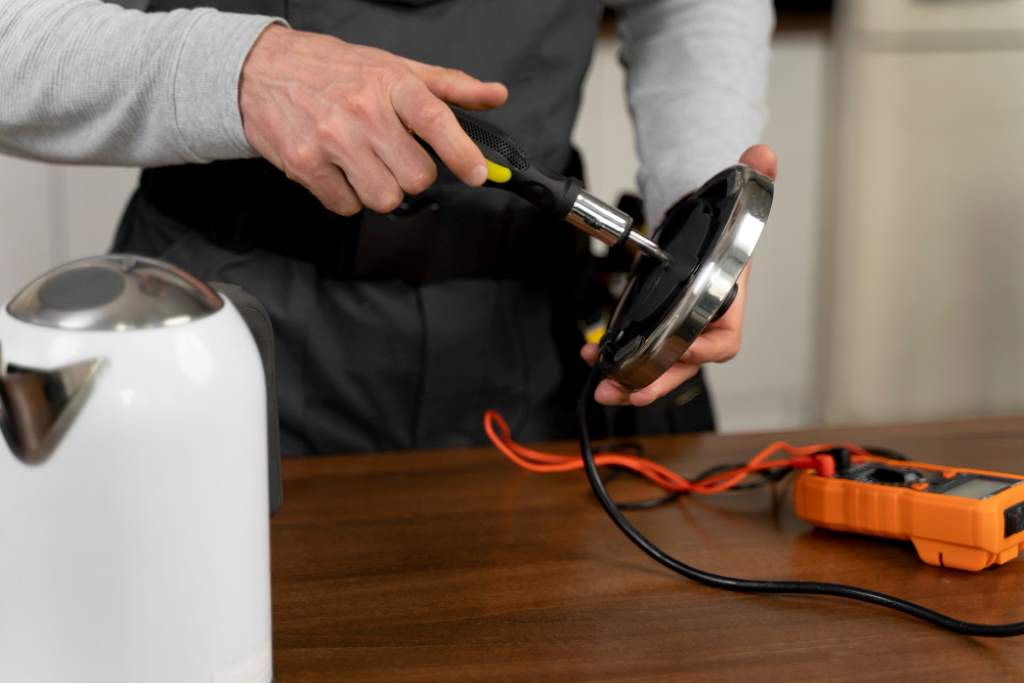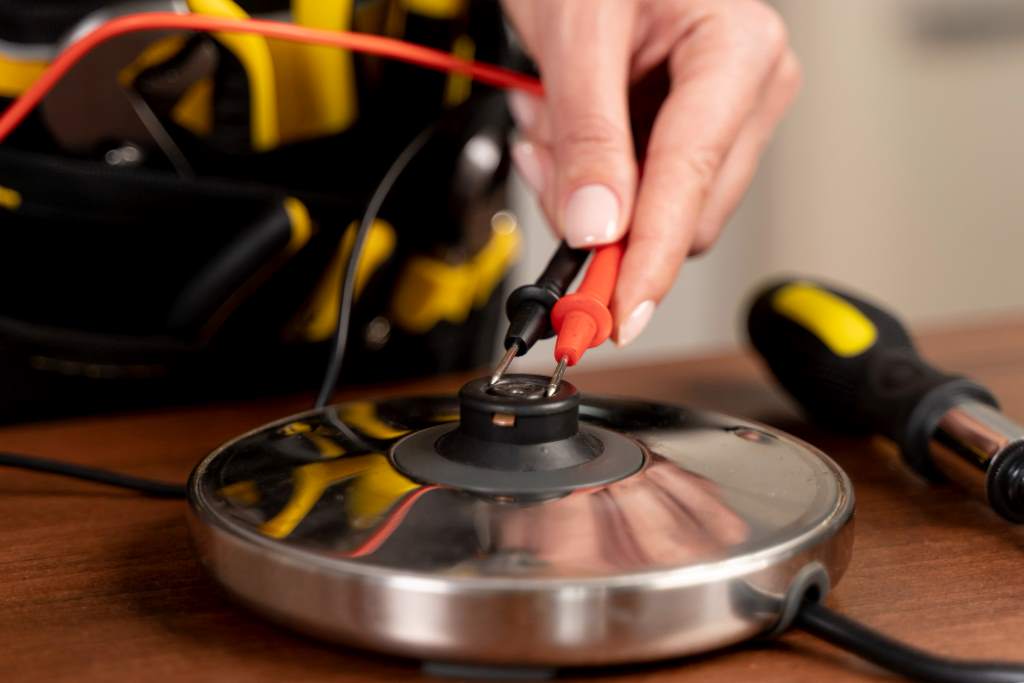Electric grinders are essential tools for professionals and DIY enthusiasts alike, tackling everything from metalwork to woodworking with ease. However, one common issue that frustrates users is overheating. An overheating grinder can slow down projects, damage the tool, or even pose safety risks. Understanding why your electric grinder overheats and how to address it can save you time, money, and headaches. In this article, we’ll explore the causes of electric grinder overheating, provide practical solutions to fix it, and share preventive tips to keep your grinder running smoothly.
Why Does an Electric Grinder Overheat?
Overheating in electric grinders occurs when the tool generates more heat than it can dissipate. This can stem from mechanical, operational, or environmental factors. Let’s break down the primary reasons why your grinder might be running hot.
1. Prolonged Use Without Breaks
Grinders are powerful tools, but they’re not designed for continuous operation over long periods. Extended use generates excessive heat in the motor and internal components, especially in high-demand tasks like cutting thick metal or grinding concrete. Most grinders are rated for intermittent use, and pushing them beyond their duty cycle can lead to overheating.
2. Overloading the Grinder
Using excessive force or applying too much pressure while grinding can strain the motor. This happens when users press down hard to speed up the process or use a grinder for tasks beyond its capacity, such as cutting materials it’s not designed for. Overloading increases friction and heat buildup, pushing the grinder toward overheating.
3. Dull or Improper Grinding Discs
A dull or incorrect grinding disc forces the motor to work harder, generating more heat. For example, using a disc meant for wood on metal can cause excessive friction, leading to overheating. Similarly, worn-out discs lose their cutting efficiency, making the grinder labor unnecessarily.
4. Blocked Ventilation Ports
Electric grinders rely on ventilation ports to circulate air and cool the motor. Dust, debris, or grime from grinding tasks can clog these ports, trapping heat inside the tool. This is especially common in dusty environments like construction sites or workshops with poor ventilation.
5. Electrical Issues
Low voltage or power surges can affect the grinder’s performance. If the power supply is inconsistent, the motor may draw more current to compensate, leading to increased heat. Faulty wiring or a damaged power cord can also contribute to this issue.
6. Poor Maintenance
Neglecting regular maintenance, such as failing to clean the grinder or lubricate moving parts, can cause internal components to wear out faster. Worn bearings or gears increase friction, which in turn generates more heat during operation.
7. Environmental Factors
Operating a grinder in high-temperature or humid environments can exacerbate overheating. Hot weather reduces the tool’s ability to dissipate heat, while humidity can affect the motor’s efficiency, especially in cordless models with battery packs.
How to Fix an Overheating Electric Grinder
If your grinder is overheating, addressing the root cause promptly can prevent permanent damage. Here are actionable steps to fix the issue and get your tool back in working order.
1. Let the Grinder Cool Down
If your grinder feels hot to the touch or shows signs of reduced performance, stop using it immediately. Allow it to cool down for at least 15–20 minutes. This gives the motor and internal components time to dissipate heat. Avoid placing the grinder in a confined space during cooling, as this can trap heat.
2. Check and Replace the Grinding Disc
Inspect the grinding disc for signs of wear, such as dull edges or uneven surfaces. If the disc is damaged or unsuitable for the material you’re working on, replace it with the correct type. For example, use a diamond disc for masonry or a metal-cutting disc for steel. Ensure the disc is securely attached and compatible with your grinder’s specifications.
3. Clear Ventilation Ports
Use compressed air or a soft brush to clean the grinder’s ventilation ports. Remove any dust, debris, or buildup that might be obstructing airflow. Be gentle to avoid damaging internal components. Cleaning the ports regularly can significantly reduce overheating risks.
4. Adjust Your Grinding Technique
Avoid applying excessive pressure while using the grinder. Let the tool’s weight and the disc’s cutting action do the work. If you’re tackling a heavy-duty task, take frequent breaks to prevent the motor from overheating. For example, grind in short bursts of 5–10 minutes, allowing the tool to rest in between.
5. Inspect the Power Supply
Check the power cord and plug for signs of damage, such as fraying or exposed wires. If you’re using an extension cord, ensure it’s rated for the grinder’s power requirements. For cordless grinders, verify that the battery is functioning properly and not overheating itself. If you suspect electrical issues, consult a professional electrician or technician.
6. Perform Routine Maintenance
Regular maintenance can prevent overheating before it starts. Clean the grinder after each use to remove dust and debris. Lubricate moving parts, such as bearings, according to the manufacturer’s guidelines. Check for loose or worn components, and replace them as needed. If you’re unsure how to perform maintenance, refer to the user manual or seek professional servicing.
7. Upgrade to a Higher-Capacity Grinder
If your grinder consistently overheats during heavy tasks, it may not be suited for the job. Consider upgrading to a model with a higher wattage or amperage rating, designed for industrial or heavy-duty use. For example, a 7-inch grinder with a 15-amp motor is better equipped for prolonged tasks than a 4.5-inch, 7-amp model. Learn Using space heater extension cord.
How to Prevent Electric Grinder Overheating
Prevention is always better than a cure. By adopting good habits and proper tool care, you can minimize the risk of overheating and extend your grinder’s lifespan.
1. Follow the Duty Cycle
Every grinder has a recommended duty cycle, which indicates how long it can operate before needing a rest. For example, a 20-minute duty cycle might suggest 15 minutes of use followed by 5 minutes of rest. Check your grinder’s manual for specific guidelines and stick to them.
2. Use the Right Accessories
Always use grinding discs and accessories recommended by the manufacturer. Ensure they match the material you’re working on and the grinder’s RPM rating. Using mismatched or low-quality discs can lead to inefficiency and overheating.
3. Keep Your Workspace Clean
Work in a well-ventilated area to promote airflow around the grinder. Use dust collection systems or shop vacuums to minimize debris buildup, which can clog ventilation ports. A clean workspace also reduces the risk of inhaling harmful particles.
4. Store the Grinder Properly
Store your grinder in a cool, dry place when not in use. Avoid leaving it in direct sunlight or damp environments, as this can affect the motor and battery (for cordless models). Use a protective case to prevent dust accumulation.
5. Monitor Environmental Conditions
Avoid using the grinder in extreme heat or humidity. If you’re working outdoors, take breaks in shaded areas to help the tool cool down. For cordless grinders, keep batteries at room temperature to maintain optimal performance.
6. Schedule Regular Inspections
Periodically inspect your grinder for signs of wear, such as unusual noises, vibrations, or reduced power. Address these issues promptly to prevent them from escalating into overheating problems. Professional servicing every 6–12 months can catch potential issues early.
When to Seek Professional Help
If your grinder continues to overheat despite troubleshooting, it may have internal damage, such as worn bearings, a faulty motor, or electrical issues. In such cases, contact the manufacturer’s service center or a certified repair technician. Attempting to fix complex issues yourself could void the warranty or cause further damage.
Safety Tips for Using Electric Grinders
Overheating isn’t just a performance issue—it can also be a safety hazard. Follow these safety tips to protect yourself and your grinder:
- Wear Protective Gear: Always use safety glasses, gloves, and a dust mask to shield yourself from debris and sparks.
- Check Before Use: Inspect the grinder, disc, and power cord for damage before starting work.
- Avoid Loose Clothing: Loose clothing or jewelry can get caught in the grinder, posing a risk of injury.
- Unplug When Not in Use: For corded grinders, unplug the tool when changing discs or performing maintenance to prevent accidental starts.
Conclusion
Electric grinder overheating is a common issue, but it’s manageable with the right knowledge and practices. By understanding the causes—such as prolonged use, dull discs, or poor maintenance—you can take targeted steps to fix and prevent the problem. Regular cleaning, proper technique, and adherence to the grinder’s duty cycle will keep your tool performing at its best. If issues persist, don’t hesitate to seek professional help to avoid costly repairs or safety risks. With these tips, you’ll keep your grinder running cool and efficient, ensuring smooth and safe operation for all your projects.







